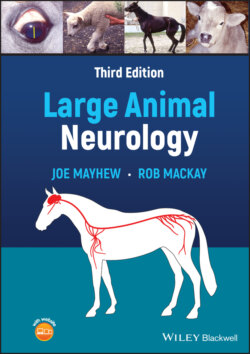Читать книгу Large Animal Neurology - Joe Mayhew - Страница 81
Oligodendrocytes
ОглавлениеThe oligodendrocyte cell bodies can show hydropic swelling in many edematous states, although the edematous fluid is often quickly transferred to astrocytes and microglial cells. The delicate oligodendrocyte processes, including those producing lipid‐rich, myelin sheaths, are very susceptible to noxious stimuli. With such insults, often the enclosed axons are also damaged, but several immune‐mediated, infectious and toxic insults cause selective disintegration of myelin sheaths with or without oligodendrocyte loss. This way the functionally vital oligodendrocyte/axon relationships are disturbed, and this process is termed demyelination. If such a perturbation occurs prior to the final developmental, perinatal process of myelination, it is termed hypomyelination. Some toxic and inherent disorders of oligodendrocytes result in disturbances of the myelin sheath, which are seen as vacuoles or fluid in the white matter, referred to as status spongiosus. Many of the disorders that affect myelin alone cause asynchrony of axonal conduction due to ephaptic coupling (short‐circuiting), seen clinically as congenital or delayed onset whole body tremor.
Remyelination of demyelinated CNS axons can occur under various conditions but is not consistent. Interestingly, remyelination in the superficial areas of the CNS is just as likely to be performed by resident and immigrant peripheral Schwann cells as by oligodendrocytes.
